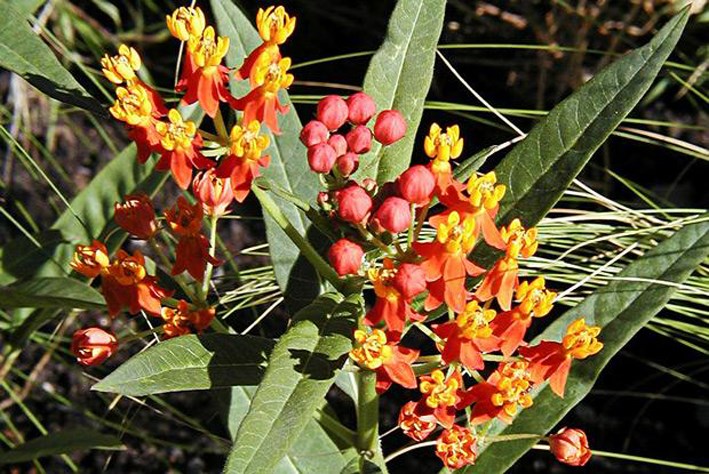Milkweed along Hwy 21 on July 26 is giving this Monarch butterfly larva a place to grow. Considered an endangered species, they ONLY eat milkweed.
This caterpillar will spin a green and gold chrysalis soon, on the bottom side of milkweed leaves.
Eventually, by about Aug. 10, we can expect this fat, striped crawler to emerge as a beautiful rusty orange and black monarch butterfly with a big wingspan - about 10 cm.
It will join the ranks of pollinators, supping nectar from flowers. They also drink water. According to a web page devoted to monarchs, (www.monarch-butterfly.com) they especially like to drink from mushy slices of banana, oranges and watermelon.
The Monarch is one of a few butterflies that migrate.
From their origin in southern Manitoba (and all of southern Canada east of the Rockies) they will fly all the way to a small overwintering site in the Oyamel Forest of central Mexico.
For those that survive the long journey, their winter habitat also poses threats from logging, agricultural development, and severe storms. Declines in the Monarch population of greater than 50 percent have occurred over the past decade.
Help Monarchs
Whether you are a casual fan or passionate about butterflies, whatever the case, take a look at a Canadian site: www.mission-monarch.org/mission-monarch-blitz/
Here, you can report on the Monarch butterfly in whatever stage you find them. This site also provides important information on how to attract them to your yard or patio.
Monarchwatch.org, explains an ongoing butterfly tagging project. A new series of unique codes is generated for each tagging season and printed using permanent inks on all-weather tags with a pressure-sensitive adhesive backing. These lightweight, circular tags were designed by Monarch Watch specifically for tagging monarchs. When applied as directed, the tags do not interfere with flight or otherwise harm the butterflies.
Tagging was originally used by Dr. Fred Urquhart of the University of Toronto help locate overwintering monarchs and later to determine where monarchs came from that wintered in Mexico. https://monarchwatch.org/tagging/
The long-range tagging program also answers questions about the origins of monarchs that reach Mexico. DO Manitoba butterflies arrive safely in Mexico? It has shown that the probability of reaching Mexico is related to geographic location, size of the butterfly, and the date (within the migration window for a given location).
In southern Manitoba, tagging would take place about early to mid-August. Citizen-scientists need a kit; and there’s detailed instructions on how to do this.




